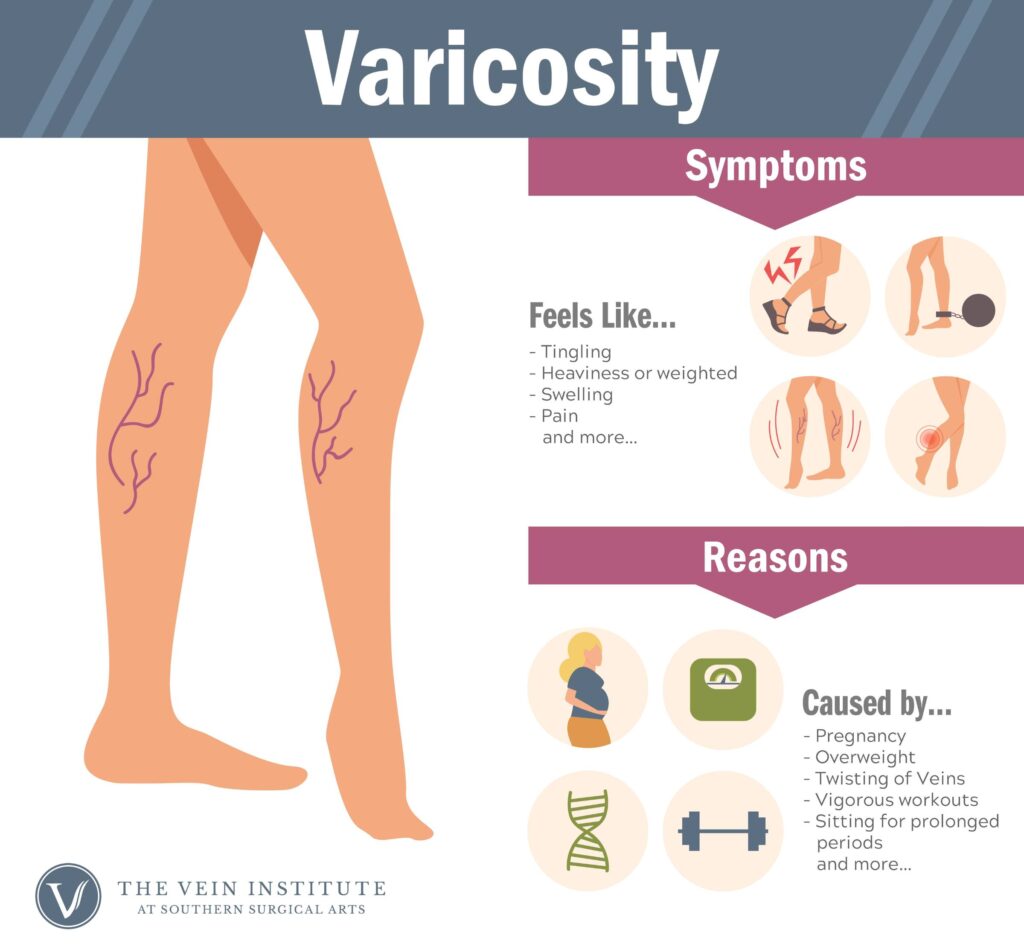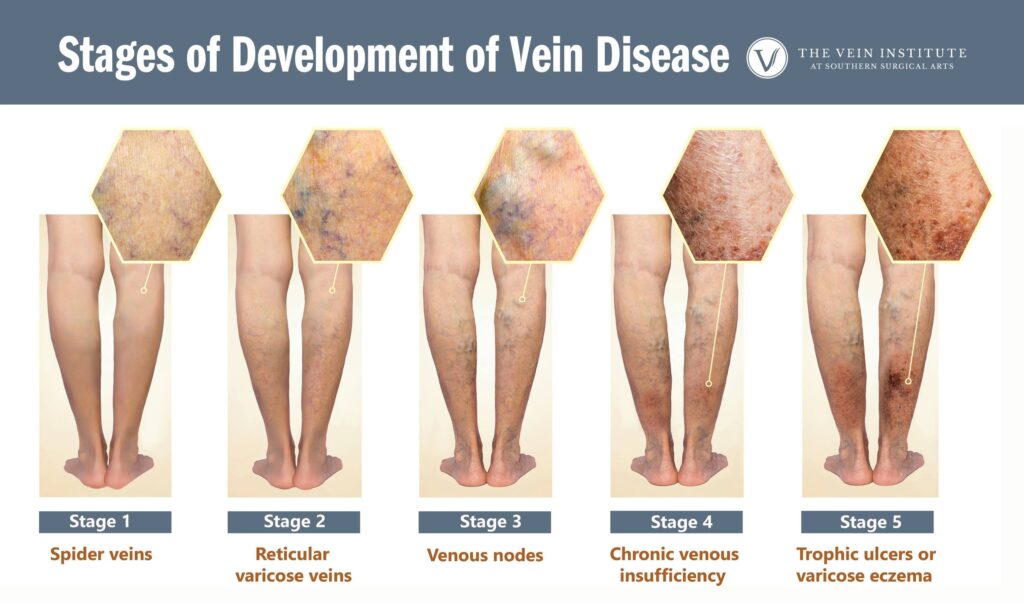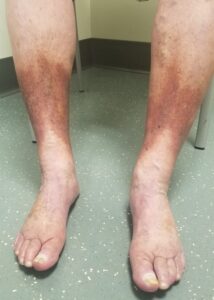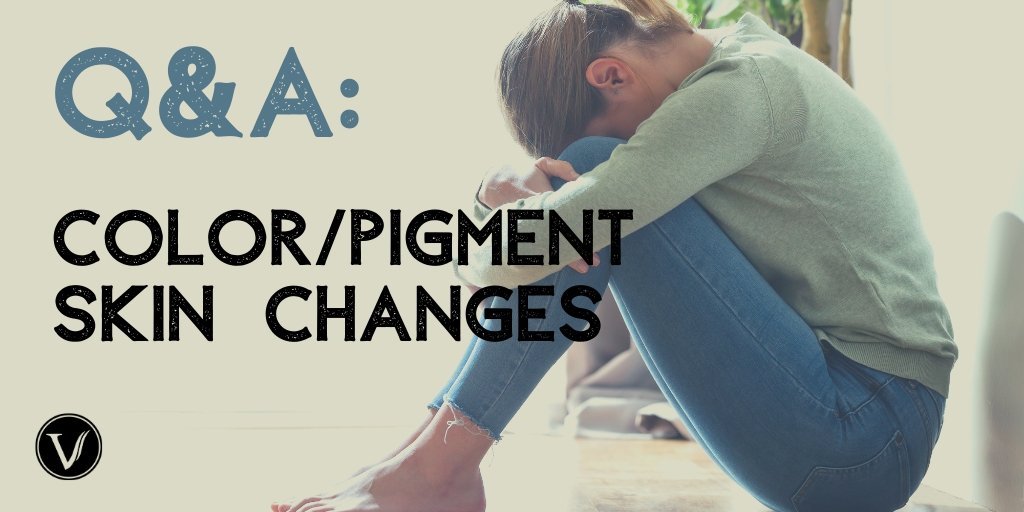The internet is full of information and is the number one place many of us to go find information about our health. But so much of what can be found is not medically sound. We want to be an educational resource for you, to empower you to get the professional medical attention you need to be at your best health. That is why we have prepared this Q & A series with your vein specialist, Dr. Vincent Gardner. This time we will explore the question: What causes color (or pigment) skin changes in the lower legs and ankles? How does vein disease cause pigment changes in the skin?
Table of Contents
ToggleQ: Is pigment the same thing as melanin? What are they?
A: Melanin is what gives your skin, hair and eyes color, or pigment. The terms melanin and pigment may be used interchangeably. Melanin is produced by your body in skin cells called melanocytes.
Q: What are some signs and symptoms of venous insufficiency?
A: Varicose veins are only one sign that you may have venous insufficiency. Other signs and symptoms of venous insufficiency may include:
- Enlarged veins that are visible beneath the surface of the skin
- Edema or swelling of the lower leg or feet
- Legs that feel achy, itchy, tired, heavy, or even painful
- Discolored pigmentation and unusually darkened melanin of the skin
- Leg cramps, particularly at night
- Restlessness or feeling that you must move your legs, particularly at night
- Thickened or hardened skin
- Open sores or venous ulcerations
- Tight skin with or without weeping of clear fluid
- Blood clots or phlebitis

Q: Are pigment changes over veins a cause for serious concern?
A: Although many vein issues are not cause for serious concern, catching them before they develop further is crucial to preserving your health and preventing serious concern from developing. Mild symptoms of venous disease can include changes in skin color. But venous stasis dermatitis is when the skin pigmentation changes towards an uncharacteristic darker bronze or red pigmentation and is a symptom associated with severe venous disease. Most people don’t know this but the end organ that becomes damaged in vein disease is the skin. So seeing skin changes is a sign of advancing disease. Severe venous disease can also lead to skin ulcers, DVT, or pulmonary embolisms, which is when a blood clot travels to your lung. It is always best to get professional medical attention if you notice any of these symptoms.

Q: What causes venous stasis dermatitis?
A: Severe venous insufficiency means the veins are not properly circulating the blood. Venous stasis dermatitis is caused when red blood cells leak out from damaged veins into the surrounding skin and soft tissue. It is there that the body breaks the red blood cells down. The red cells contain iron which stains the tissues, causing a dark red/brown discoloration to appear on the skin and surrounding tissues in the lower legs and ankles. Not only does this cause visible discoloration, but it can also lead to itchiness, which can sometimes be very intense.

Schedule a free consultation!
We would be honored to have you come on in for a free consultation. Schedule yours today!
[Source: “EPublications.” Varicose Veins and Spider Veins Fact Sheet. Ed. Robert J. Min. Women’s Health, US Department of Health and Human Services, 16 July 2012. Web. 18 June 2015.]

